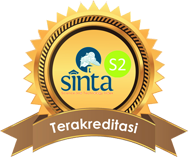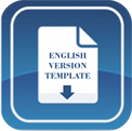Development of an Augmented Reality-Based Practicum E-Module Integrated with Local Wisdom of Salak Fruit
DOI:
https://doi.org/10.15575/jtk.v9i2.39486Keywords:
augmented reality, chemical bonds, e-module, local wisdomAbstract
References
Allo, A. Y. T., & Suhendra, C. D. (2022). Development of E-Modules Using Augmented Reality in Physics Teaching at High School of Manokwari Regency. JPPIPA (Jurnal Penelitian Pendidikan IPA), 7(2), 52–59. https://doi.org/10.26740/jppipa.v7n2.p52-59
Almaatouq, A., Becker, J., Houghton, J. P., Paton, N., Watts, D. J., & Whiting, M. E. (2021). Empirica: A Virtual Lab for High-Throughput Macro-Level Experiments. Behavior Research Methods, 53(5), 2158–2171. https://doi.org/10.3758/s13428-020-01535-9
Asmar, A., & Suryadarma, I. G. P. (2021). Pengembangan Perangkat Pembelajaran IPA Terpadu Model Nested Berbasis Perahu Phinisi untuk Meningkatkan Keterampilan Komunikasi dan Pengetahuan Konseptual. Jurnal Pendidikan Sains Indonesia (Indonesian Journal of Science Education), 9(4), 565–578. https://doi.org/10.24815/jpsi.v9i4.20994
Branch, R. M. (2009). Develop. Instructional Design: The ADDIE Approach. New York: Springer
Fadhila, N. S., Winarni, S., Kumalasari, A., Marlina, M., & Rohati, R. (2023). Desain Modul Berbasis Augmented Reality dalam Meningkatkan Kemampuan Spasial Siswa SMP. Jurnal Cendekia: Jurnal Pendidikan Matematika, 7(3), 3321–3337. https://doi.org/10.31004/cendekia.v7i3.2654
Fitri, N. A., Hidayanti, E., Hadisaputra, S., & Han, S.-L. (2023). Development and Evaluation of Laboratory Work Module to Enhance Student’s Knowledge in Molecular Visualization. JTK (Jurnal Tadris Kimiya), 8(1), 30–41. https://doi.org/10.15575/jtk.v8i1.25647
Harackiewicz, J. M., Smith, J. L., & Priniski, S. J. (2016). Interest matters: The importance of promoting interest in education. Policy Insights from the Behavioral and Brain Sciences, 3(2), 220–227. https://doi.org/10.1177/2372732216655542
Iakovides, N., Lazarou, A., Kyriakou, P., & Aristidou, A. (2022). Virtual Library in The Concept of Digital Twin. 2022 International Conference on Interactive Media, Smart Systems and Emerging Technologies (IMET), 1–8. https://doi.org/10.1109/IMET54801.2022.9929598
Isaloka, I., & Dwiningsih, K. (2020). The Development of 3D Interactive Multimedia Oriented Spatial Visually on Polar and Nonpolar Covalent Bonding Materials. JTK (Jurnal Tadris Kimiya), 5(2), 153–165. https://doi.org/10.15575/jtk.v5i2.8688
Isnaini, M., & Ningrum, W. P. (2018). Hubungan Keterampilan Representasi terhadap Pemahaman Konsep Kimia Organik. Orbital: Jurnal Pendidikan Kimia, 2(2), 12-25. https://doi.org/10.19109/ojpk.v2i2.2637
Kusdiyanti, H., Zanky, M. N., & Wati, A. P. (2020). Blended learning for augmented reality to increase student competitiveness the filling subject toward making Indonesia 4.0. KnE Social Sciences, 88-100. https://doi.org/10.18502/kss.v4i7.6845
Mansor, N. R., Zakaria, R., Rashid, R. A., Arifin, R. M., Abd Rahim, B. H., Zakaria, R., & Razak, M. T. A. (2020). A Review Survey on The Use Computer Animation in Education. IOP Conference Series: Materials Science and Engineering, 917(1), 12021. https://doi.org/10.1088/1757-899X/917/1/012021
Meltzer, D. E. (2002). The Relationship Between Mathematics Preparation and Conceptual Learning Gains in Physics: A Possible “Hidden Variable†in Diagnostic Pretest Scores. American Journal of Physics, 70(12), 1259–1268. https://doi.org/10.1119/1.1514215
Pohan, H. M., & Lubis, A. M. (2019). Pengembangan Buku Penuntun Praktikum Kimia Berbasis Chemoentrepreunership Terhadap Minat Wirausaha Mahasiswa Universitas Muhammadiyah Tapanuli Selatan. J-PEK (Jurnal Pembelajaran Kimia), 4(2), 88–91. http://dx.doi.org/10.17977/um026v4i22019p088
Qodirovich, M. D., Jalolovich, Y. N., Samadovich, A. S., & Abdurazzakovna, R. N. (2021). Methods of Developing Students’ Spatial Imagination Using Computer Graphics in The Teaching of Drawing. The Journal of Contemporary Issues in Business and Government, 27(1), 1522–1528. Retrieved from https://cibgp.com/au/index.php/1323-6903/article/view/650
Rahmawati, Y., Dianhar, H., & Arifin, F. (2021). Analysing Students’ Spatial Abilities in Chemistry Learning Using 3D Virtual Representation. Education Sciences, 11(4), 185. https://doi.org/10.3390/educsci11040185
Raja, R., & Nagasubramani, P. C. (2018). Impact of Modern Technology in Education. Journal of Applied and Advanced Research, 3(1), 33–35. https://doi.org/10.21839/jaar.2018.v3iS1.165
Saraswati, T. E., Saputro, S., Ramli, M., Praseptiangga, D., Khasanah, N., & Marwati, S. (2017). Understanding Valence-Shell Electron-Pair Repulsion (VSEPR) Theory Using Origami Molecular Models. Journal of Physics: Conference Series, 795(1), 12066. https://doi.org/10.1088/1742-6596/795/1/012066
Serevina, V., Astra, I., & Sari, I. J. (2018). Development of E-Module Based on Problem Based Learning (PBL) on Heat and Temperature to Improve Student’s Science Process Skill. Turkish Online Journal of Educational Technology-TOJET, 17(3), 26–36. Retrieved from http://www.tojet.net/articles/v17i3/1733.pdf
Tarng, W., Lin, Y.-J., & Ou, K.-L. (2021). A Virtual Experiment for Learning The Principle of Daniell Cell Based on Augmented Reality. Applied Sciences, 11(2), 762. https://doi.org/10.3390/app11020762
Wahyudi, U. M. W., & Arwansyah, Y. B. (2019). Developing Augmented Reality-Based Learning Media to Improve Student Visual Spatial Intelligence. Indonesian Journal of Curriculum and Educational Technology Studies, 7(2), 89–95. Retrieved from https://journal.unnes.ac.id/sju/jktp/article/view/36039
Waldman, J. (2016). Augmented reality maps (US Patent No. 9488488B2). U.S. Patent and Trademark Office. Retrieved from https://patents.google.com/patent/US9488488B2/en
Yip, J., Wong, S.-H., Yick, K.-L., Chan, K., & Wong, K.-H. (2019). Improving Quality of Teaching and Learning in Classes by Using Augmented Reality Video. Computers & Education, 128, 88–101. https://doi.org/10.1016/j.compedu.2018.09.014
Yuni, R., & Afriadi, R. (2020). Pengembangan Modul Pembelajaran Kondisional untuk Belajar dari Rumah (BDR). Jurnal Handayam, 11(2), 144–152. http://dx.doi.org/10.24114/jh.v11i2.221
Downloads
Published
How to Cite
Issue
Section
Citation Check
License
Authors who publish with this journal agree to the following terms:
- Authors retain copyright and grant the journal right of first publication with the work simultaneously licensed under a Creative Commons Attribution-ShareAlike that allows others to share the work with an acknowledgement of the work's authorship and initial publication in this journal.
- Authors are able to enter into separate, additional contractual arrangements for the non-exclusive distribution of the journal's published version of the work (e.g., post it to an institutional repository or publish it in a book), with an acknowledgement of its initial publication in this journal.
- Authors are permitted and encouraged to post their work online (e.g., in institutional repositories or on their website) prior to and during the submission process, as it can lead to productive exchanges, as well as earlier and greater citation of published work (See The Effect of Open Access).








